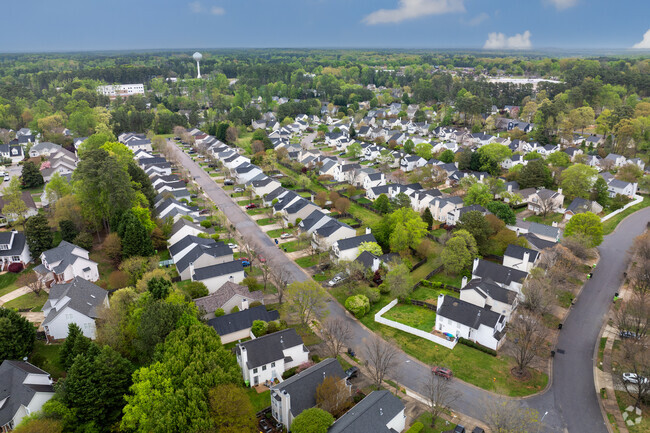Recently, North Carolina Department of Insurance Commissioner Mike Causey and the North Carolina Rate Bureau (NCRB) agreed to an average statewide homeowners’ insurance base rate increase of 7.5% effective June 1, 2025, and another 7.5% increase effective June 1, 2026. As carriers look to implement these rate changes, many homeowners in the Tar Heel state are asking questions, including what measures can be taken to minimize impacts.
North Carolina Insurance Landscape
The NCRB is a non-profit, unincorporated rating bureau created by the General Assembly of North Carolina under the provisions of Article 36 of Chapter 58 of the General Statutes of North Carolina on September 1, 1977. Its primary purpose is to provide services and programs for the insurance industry in North Carolina for automobile, property, and workers’ compensation.
Unlike in other states, the 14-member Bureau board files for requested rates and negotiates on behalf of the entire industry. Any increase in rates must be approved by the state of North Carolina.
In January of 2024, the NCRB formally asked the state to approve an average increase of 42.2% on homeowners’ insurance rates. Insurers stated the main driving factors causing rate increases include climate change, environmental disasters, inflation, rising construction costs, and the continual rising reinsurance rates. This rate proposal was initially rejected which led to a judicial hearing and negotiated an agreement announced on January 10, 2025.
“The insurance companies wanted to raise our homeowners’ rates up to 99.4% in some areas and an average 42.2% statewide in a single year,” Commissioner Causey stated in a press release. “I fought for consumers and knocked them back to 7.5% increases over two years with a maximum of 35% in any territory. These rates are sufficient to make sure that insurance companies, who have paid out large sums due to natural disasters and face increasing reinsurance costs due to national catastrophes, have adequate funds on hand to pay claims. We consider this settlement a big win for both homeowners and North Carolina.”
Immediate Impacts
Now that an agreement on a rate increase is firmly in place, the average homeowner in North Carolina will not see major double-digit rate increases for at least the next two years. However, it is important to note that some areas, such as the Coastal and Mountain locations, could see a higher rate increase whereas other areas may see less. Areas with the biggest change in rates are those recently impacted by hurricanes, large storms, or natural disasters. Counties that have not been affected by these storms will see lower rate changes.
You can view the 2024 Proposed Homeowners Insurance Rate Settlement that lists the counties/cities by territory rates through this link:
https://www.ncdoi.gov/2024-proposed-homeowners-insurance-increase-settlement-table/open
Keep in mind that through these various rate proposals, the Rate Bureau is attempting to keep as many insurance carriers as possible from withdrawing or not writing new business in the state of North Carolina. Other states, including California and Florida, have seen carriers severely limit their writings or in some cases, withdraw entirely from the marketplace, creating even further pricing pressures on the carriers actively writing in the state.
“It’s a step in the right direction, but the North Carolina Rate Bureau asked for a larger increase because that’s what recent claims data called for,” stated Rate Bureau’s COO Jarred Chappell. “Storms have gotten stronger and more damaging, more people are living in disaster-prone areas, inflation in the construction industry has been particularly high and reinsurance costs have exploded. All these cost drivers remain an issue.”
Safeguarding Your Success
While we cannot control the ebb and flow of rates as consumers, there are some steps that you can take to ensure that you are getting the best bang for your buck. Since North Carolina is a “Consent to Rate” state, monitoring your credit score for accuracy can help in accessing lower rates. Credit scores directly correlate to insurance premiums for residential property and private passenger automobiles, along with other rating factors including location of the property and cost to replace your home under homeowner’s policies and driving record, age, and gender under automobile policies. Note that your insurance score cannot be used as the sole basis for termination policies (in existence for more than 60 days (or any coverage in an existing policy, rather, a basis for providing discounts available.
Additionally, being diligent in maintaining your coverage and mindful of the types and number of claims filed allows greater leverage in accessing the best market options. Your insurance program is designed for catastrophes, not large numbers of smaller claims, and certainly does not take the place of proper maintenance of your property and automobiles. Not all claims are considered equal either. Dog bites, slip trip and fall, water damage and mold claims are often red flags to insurers on homeowner’s policies. These claims can negatively impact the underwriting of your policy renewal.
Scheduling a periodic review of your policies, assets, and exposures can help protect you from gaps in coverage and set you on the best path for adequate protection when a loss does occur. At a minimum, exposures should be reviewed annually with your representative.
Contact the Sentinel team for a complimentary review to ensure that your policy is the best fit for you. With our guidance and expertise, you can have peace of mind knowing that your assets and loved ones are protected from unforeseen events that could impact your financial security at the time of a claim. Learn more about the Sentinel Difference today.


